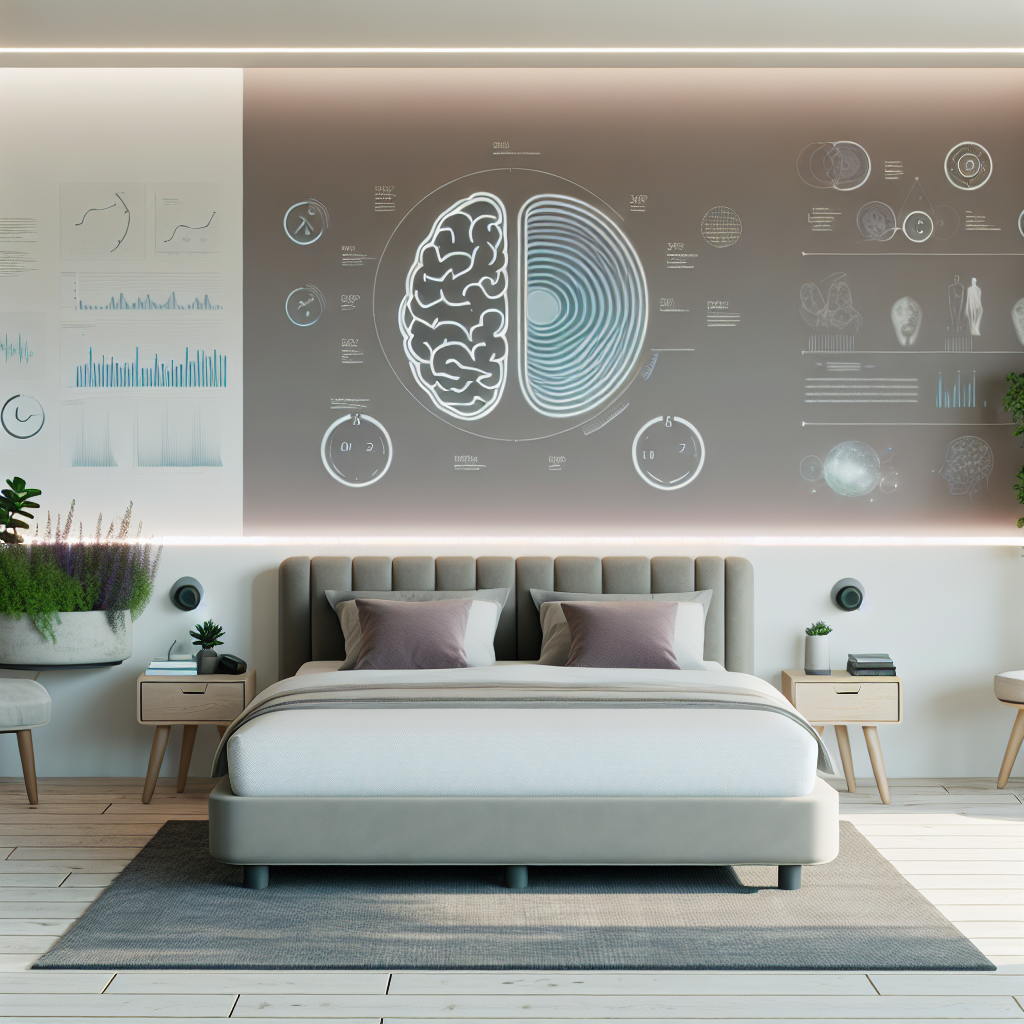Neuro-Optimized Bedrooms: Creating Sleep Environments Based on Brain Development Science
In today’s rapidly evolving parenting landscape, discerning parents are no longer satisfied with the basics when it comes to their child’s environment. Especially for families with significant means, optimizing all aspects of a child’s early development has become a top priority.
One area now garnering serious attention from child development specialists and neurological researchers is the environment in which children sleep.
Sleep isn’t just rest—it’s one of the most formative elements in a child’s neurological and psychological development. According to the American Academy of Pediatrics, children spend nearly 40% of their childhood asleep. During these crucial hours, their brains undergo processes like memory consolidation, emotional regulation, and cellular repair.
But while sleep may be a natural event, the quality and structure of sleep are heavily influenced by the environment. The bedroom—commonly viewed as a place of rest—emerges as a critical space for fostering healthy brain development.
Welcome to the era of neuro-optimized bedrooms, where every design decision is guided by cutting-edge neuroscience. This approach combines cognitive science, interior design, and wellness to create sleep spaces that actively support a child’s brain function and emotional well-being.
Today’s luxury parenting goes beyond aesthetics and into meaning. Rooms once designed for show are now designed for synaptic connectivity, REM regulation, and sensory synchronization.
This article offers a comprehensive guide on how to create a sleep sanctuary that not only comforts but also contributes to the foundation of lifelong mental and emotional strength.
Mastering Melatonin: Circadian Rhythm & Blue Light Control
Studies have shown that blue light exposure before bedtime reduces the production of melatonin, the hormone responsible for signaling the brain when it’s time for sleep. According to the Journal of Clinical Endocrinology & Metabolism, even modest levels of blue light can delay sleep onset and impact the quality of children’s sleep.
Neuro-optimized bedrooms are designed to mitigate blue light interference through features such as:
- Red-spectrum night lighting to calm the brain.
- Blackout curtains that block artificial street and device lights.
- Blue-light blocking window films or screen curfews integrated into device management systems.
This blend of science and design ensures that the body’s natural sleep rhythms remain intact and children fall asleep faster and stay asleep longer.
The Power of Cool: Temperature’s Effect on Deep Sleep
The optimal ambient temperature for restorative sleep is between 65–70°F (18–21°C). Both the National Sleep Foundation and NIH confirm that slightly cooler environments promote deep, slow-wave sleep where critical brain processes like memory retention and cellular restoration occur.
Temperature-controlled luxury sleep environments may include:
- Bedding with thermoregulating properties such as bamboo, eucalyptus, or engineered silk.
- Programmable smart thermostats tailored to nighttime dips in body temperature.
- Adaptive sleepwear and layered blankets to regulate individual comfort.
These details extend far beyond comfort—they are key indicators in shaping the biological processes of a thriving, developing brain.
Calming the Cortex: Sensory-Neutral Design for Emotional Regulation
Excess stimulation—especially visual and tactile—can lead to cortical hyperarousal, making it difficult for a child’s brain to wind down. A study from the University of British Columbia shows that minimalistic and earthy color schemes noticeably improve children’s sleep cycles and reduce pre-bedtime anxiety.
Strategies for regulating sensory input include:
- Use of soft, nature-derived color palettes such as sage green, sunrise lavender, and blush beige.
- Natural textures like sanded wood furniture, untreated linen curtains, and woolen rugs offer grounded, tactile comfort.
- Decluttering visual spaces with seamless wall storage and minimal decorative elements promotes mental organization and peace.
When the visual environment soothes rather than stimulates, the path to sleep becomes a natural, welcomed transition.
The Fragrance of Focus: Scent’s Role in Sleep & Memory
Olfactory input is deeply connected to the brain’s emotional and memory centers. In fact, certain scents have measurable impacts on how well we organize emotional experiences during sleep. A 2020 study in Scientific Reports found that exposure to calming essential oils like lavender and chamomile increases REM sleep duration and enhances emotional integration.
Neuro-optimized bedrooms incorporate scent with:
- Programmable essential oil diffusers that release aromas during specific sleep phases.
- Organic, non-toxic linens pre-treated with gentle aroma therapies.
- Scented plush toys or sensory pillows infused with light toasted vanilla or sandalwood notes.
This multisensory layer of comfort not only deepens relaxation but fosters clarity and confidence in formative memory processes.
Silence by Design: Acoustic Engineering for Uninterrupted Sleep
The brain doesn’t fully “shut off” during sleep—it remains responsive to external sound. According to research from the Harvard Division of Sleep Medicine, consistent sound environments support stable deep sleep and learning retention.
To achieve psychological tranquility, luxury bedrooms often include:
- Felt-lined walls and acoustic ceiling panels to absorb ambient irritants.
- Double-glazed or triple-pane windows to block street and urban noise.
- Gentle sound machines offering oceanic or forest-based white noise, carefully synced with child sleep patterns.
When stillness isn’t natural, design creates it—ushering the brain into prolonged, uninterrupted cycles of deep sleep.
Form That Functions: Ergonomics Meets Sleep Science
Proper ergonomics promote not just physical comfort but impact motor development and synaptic coordination. From crib selection to how floor spaces are used, every design choice matters.
Key ergonomic considerations include:
- Pressure-dispersing mattresses that support developing spines and avoid allergens.
- Cribs and toddler beds with adjustable heights and guard features to match the child’s growing motor capabilities.
- Seating for parents that promotes upright posture and encourages secure bonding during nursing or reading time.
When form follows function, children move more organically through developmental milestones.
Conclusion: Where Wellness and Design Begin
The modern child’s bedroom is no longer just a place to rest—it’s a nurturing ecosystem informed by neuroscience, sensory harmony, and design excellence.
When families invest in neuro-optimized living spaces, they’re banking not only on aesthetics but on a future of improved cognitive health, emotional stability, and educated adaptability. These bedrooms become the first learning environments—and perhaps the most effective.
In the intersection of opulence and science, luxury parenting finds its new foundation—not in what is seen, but in how well a child sleeps, develops, and thrives.
References
- American Academy of Pediatrics – Healthy Sleep Habits
- Journal of Clinical Endocrinology & Metabolism – Blue Light and Melatonin Suppression
- National Sleep Foundation – Room Temperature and Sleep
- National Institutes of Health – Thermoregulation and Sleep
- University of British Columbia – Design and Child Stress Responses
- Scientific Reports – Olfactory Stimulation and REM Sleep
- Harvard Division of Sleep Medicine – Environmental Noise and Children’s Sleep
For more curated insights on high-end holistic childhood development, visit kidluxury.com.

Dominic E. is a passionate filmmaker navigating the exciting intersection of art and science. By day, he delves into the complexities of the human body as a full-time medical writer, meticulously translating intricate medical concepts into accessible and engaging narratives. By night, he explores the boundless realm of cinematic storytelling, crafting narratives that evoke emotion and challenge perspectives. Film Student and Full-time Medical Writer for ContentVendor.com



